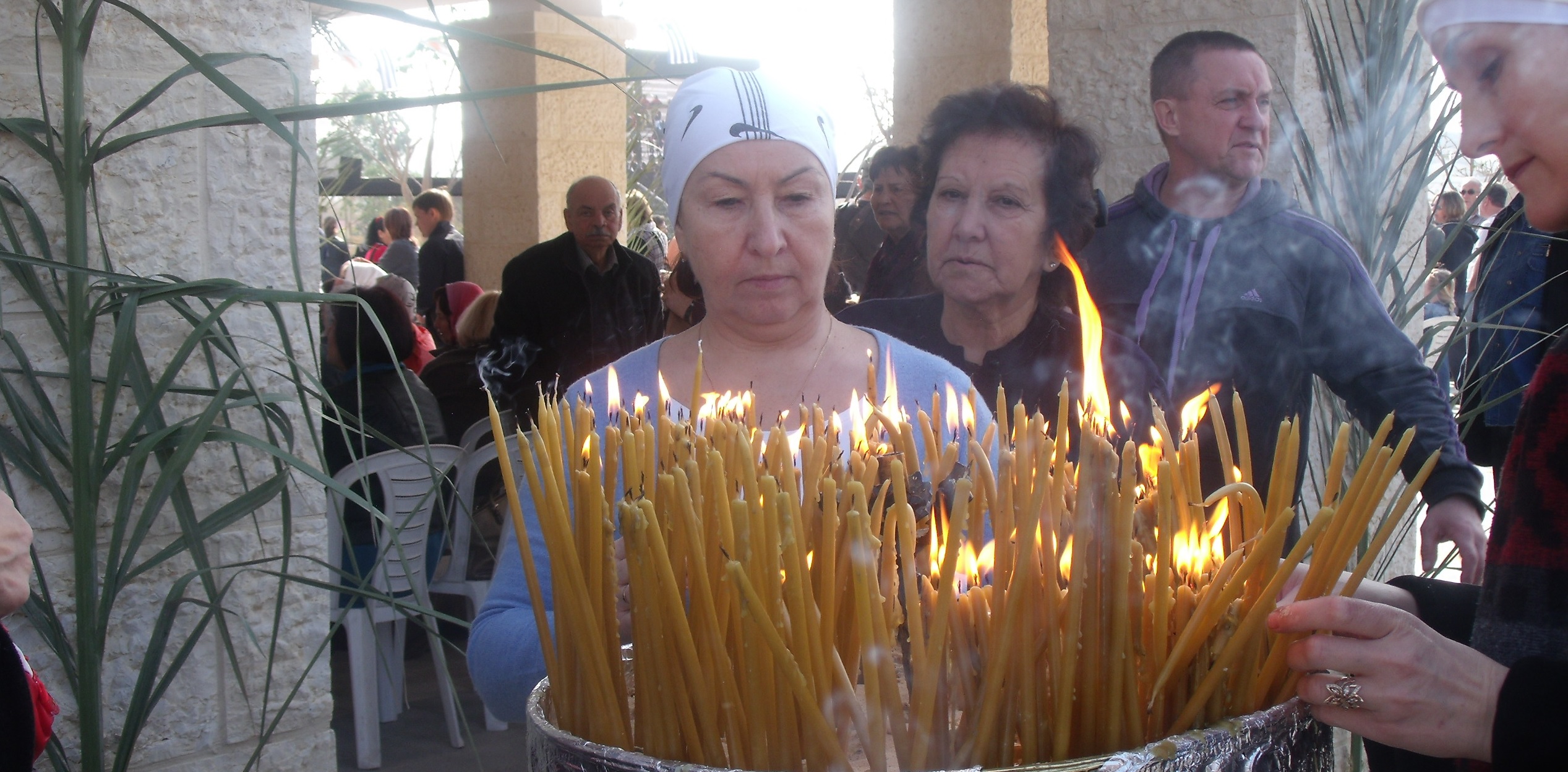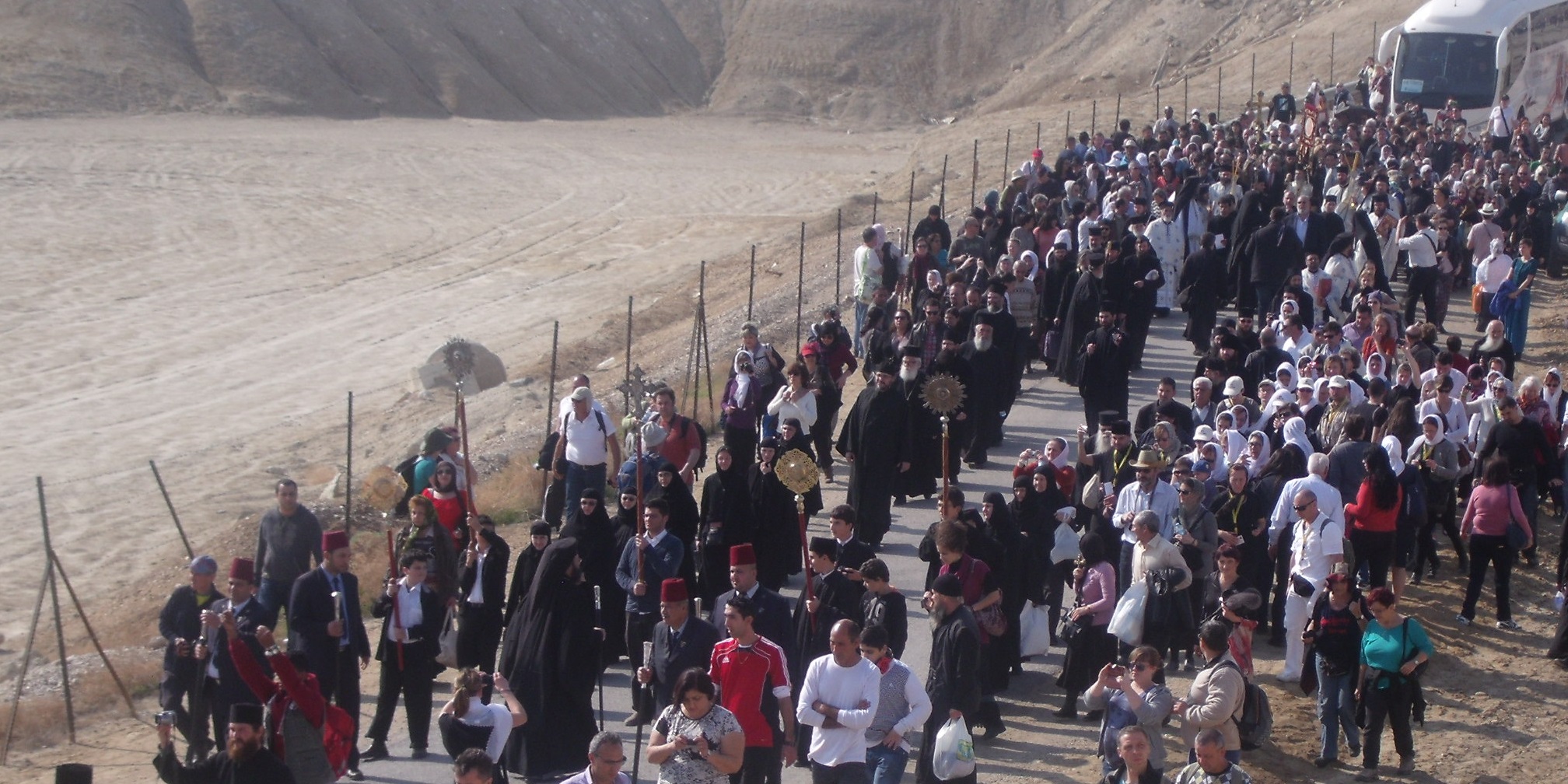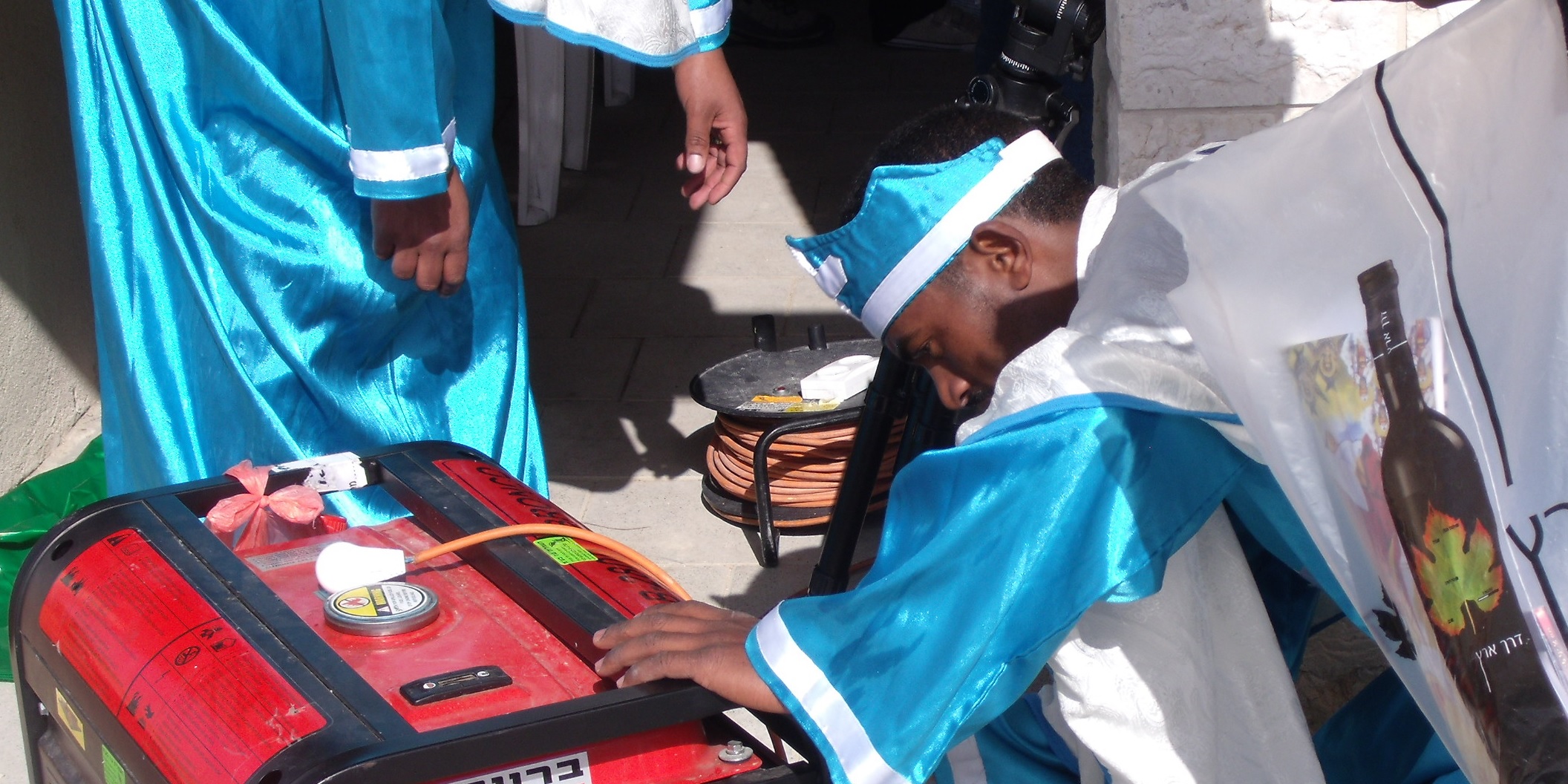




Qasr al-Yahud is a baptismal site in the Jordan River Valley in the West Bank. Prevailing Christian traditions locate here the dramatic event during which Jesus was baptized by John. It is also considered the place where the Israelites crossed the Jordan River and Elijah the Prophet ascended to heaven. These understandings have been shaping the site and the religious activities therein since the 4th century AD. As long as the site was under the control of the Hashemite Kingdom of Jordan, it was visited by masses of tourists and pilgrims. This was altered as a result of the 1967 war and as of the summer of 1968 access to the site was prohibited by Israel security forces due to its location within a closed military zone. Following the Oslo Accords Israeli Minstry of Tourism heavily invested in promoting, renovating and upgrading the site and promoting it again as a key tourists and pilgrims attraction. As of January 2011 it was re-open to the public following a period of over forty years during which activities were almost grinded to a halt.
The “Israeli” site is set against its Jordanian counterpart. Jordanian officials reacted angrily and in much dismay to the re-opening of the site and beseeched the Pope’s approval to the authenticity of ‘their’ location on the eastern side of the Jordan River, which is within the Jordanian territory. As of yet no Papal authentication was granted to either of the sides.
Lior Chen of our research team has been conducting observations and ethnographic work in and on the site over the last two years and will keep his ethnographic work there for at least three more years. According to his observations, the site on the Israeli side is much more popular than the site on the Jordanian side. This is partially because it is more accessible to pilgrims/tourists which are already visiting Israel and also because the Ministry of Tourism keeps investing in promotion and renovations of the site.
The site is administered by the Israel Nature and Parks Authority and Judea and Samaria Israeli Civil Administration.
“Crossing of the Jordan”
An Ethnographic encounter with the re-enactment of
the Israelites crossing to Jericho
A naissance of a new Jewish pilgrimage site?
י' בניסן / 10.4.14 – 10:35
(15) and as those who bore the ark had come unto the Jordan, and the feet of the priests who bore the ark were dipped in the brim of the water (for the Jordan overfloweth all his banks all the time of harvest (16) that the waters which came down from above stood and rose up in a heap very far from the city Adam, that is beside Zaretan. And those who came down toward the sea of the plain, even the Salt Sea, failed and were cut off; and the people passed over right against Jericho. (Joshua 3, 15-16).
This is the second year in which Erna Covos organizes a ceremony to celebrate the crossing of the river by the people of Israel. According to her web site, this year's ceremony included Torah lessons by Rabbi Dr. Hagi Ben Artzi and songs by Bat Kol choir and the "Etzion Flowers" children choir. When I interviewed Erna, she told me that last year a few dozens of people took part in the ceremonies and a few days ago, when I spoke with her about this year's event, she predicted a similar number of people.
But when Chen (who joined me) and I arrived to the site we saw no more than ten adults and a dozen or so kids and teenagers. This small crowd consisted of Jews-Israelis from Beit El, Gush Etzion and the Jordan Valley. Surprisingly, there was a Muslim dominance on the site: a bus from Yatta – a Palestinian village - brought along some fifty women and children, another bus packed with students arrived from Abu Dis, and yet another bus with elementary school students arrived from Jericho. It was a good day to bring Chen, who speaks Arabic, to the site, I thought to myself. Arafat, a Palestinian photographer who accompanied an Italian group, told me later that "the site is full with groups of Muslim children during the last ten days". They don't come particularly for religious reasons, although Mary and Jesus are connected to the Islam. Only one Muslim woman defined her visit as religious. Most of the people we talked to referred to it merely as a journey, a day’s excursion. In addition to the Muslim groups the crowd was a miscellaneous of religious denominations and nationalities: a small group from Korea, Catholics and Protestants (in different groups) from Germany, Italian Catholics, and Indian Catholics from Cochin.
In contrast to the various ceremonies held during the Epiphany day, one cannot have noticed that a special event was about to take place on the site. Employees of Israel Nature and Parks Authority are weeding plants that went through the floor tiles, the seller at the store is not even aware that a ceremony is to take place today. It's not a surprise, then, that Erna looks a bit disappointed.
But the ceremony actually takes place. It begins near the water. Erna stands aside and two other people take control over the event. The first is a journalist and photographer from ‘Makor Rishon’, a right wing Israeli newspaper. It was only the previous day (April 9, 2014) that we had our project tour during which we discussed research ethics and humored about tainting and changing the ethnographic scene and now I see before me that the journalist, who should only cover the event, is in fact directing it. She forces an IDF soldier (who is guarding the site) to join the group and then grabs him by the hand, moving him from side to side to get a better frame. In addition, she urges members of the choir to sing aloud, to stop singing etc.

The second scene changer and agent is surely Hagi Ben-Artzi, who stands between the chorus members. He urges them to start singing, just to "warm up", and nearly causes an incident as the “official” conductor of the chorus has not arrived yet. Ben-Artzi continues to be very dominant during the singing near the water and later in the ceremony which takes place in a higher platform away from the river.
The ceremony includes singing, cantorial singing, speeches and bible lessons by the very same Rabbi Ben-Artzi. During the ceremony I asked the people who gathered there what were their reasons for coming to the event. Interestingly, just four people came on their own volition. The others were over there on duty: parents of the choir boys, drivers etc. even the few who came voluntarily, were two local tour guides who came with their partners.
The Christian pilgrims looked very interested in the Jewish ritual. This was especially noticeable near the end of the ceremony. The choir sings "Hallelujah" and the German Protestant group joins the song. For a moment, Turner's "comunitas" appeared. But soon the group continued to the water and the usual separation between different groups returns.
During the ceremony and surely after it ended, I spoke with the participants. The prevailing opinion among them is that the site will not become a significant Jewish pilgrimage site, but as Ben-Artzi said during his speech: "every pilgrimage site starts with one crazy man and just a few people”. And maybe one day the children from Etzion Flowers Choir will be able to say that they were there at the naissance of Qasr al-Yahud as it transformed into a Jewish pilgrimage site (Jordan crossing).
Lior Chen
video 1+2 - Christians and Orthodox Jews at Qasr al-Yahud
video 3 - jewish during the jordan crossing ceremony. 10.4.2014